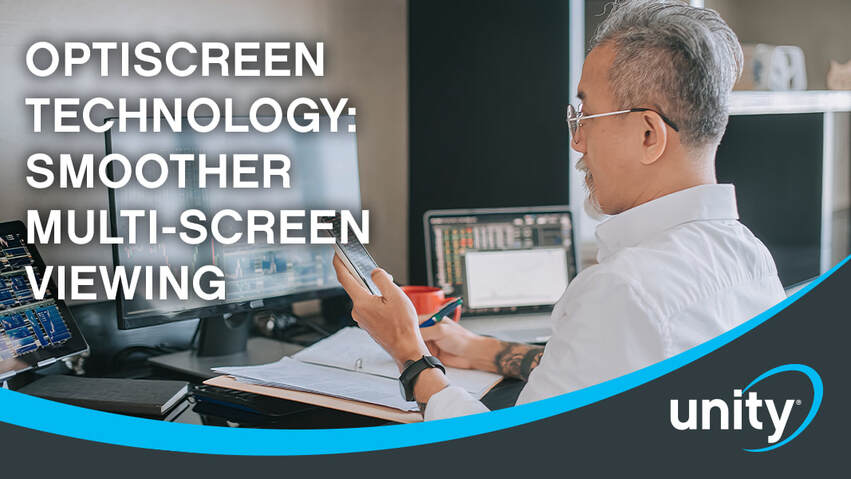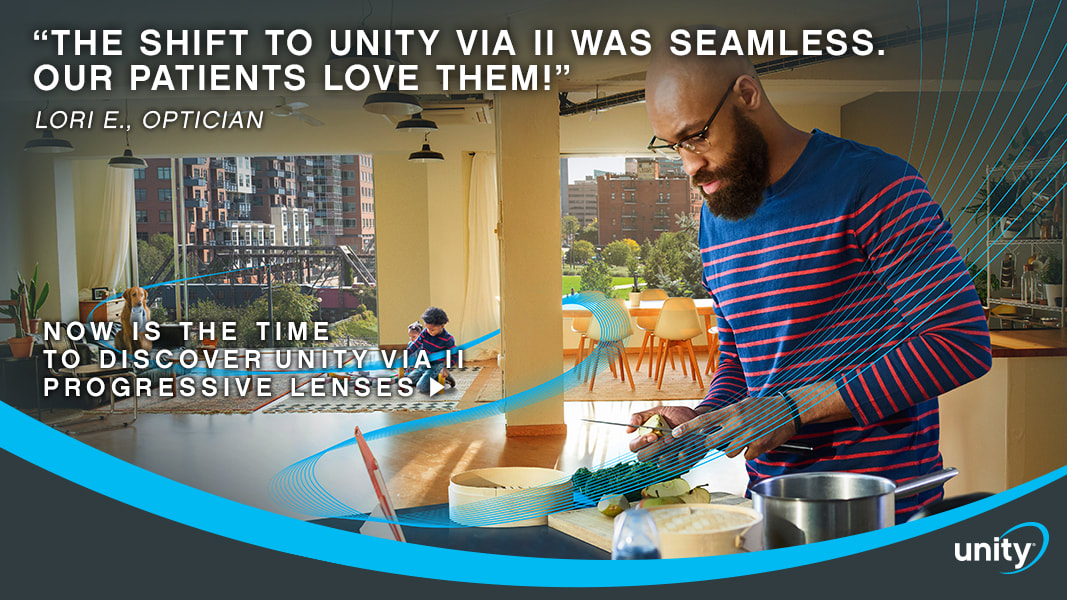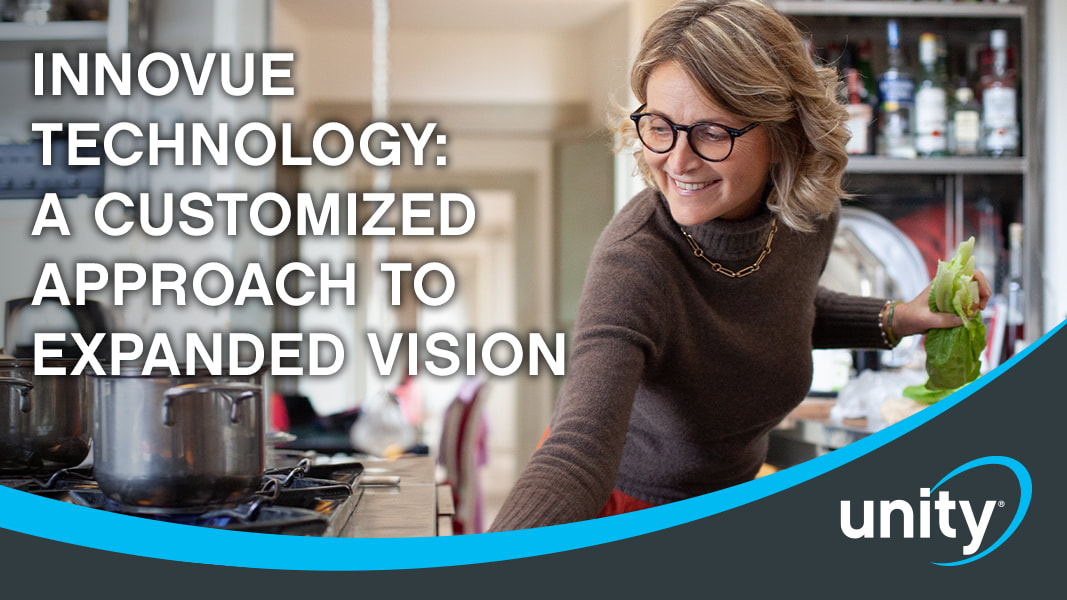|
Whether spending a relaxing day at home or heading out on an adventure, patients are looking for lenses that adapt to life’s moments and fit their style. That’s where Unity Via Elite II lenses enter the conversation. In addition to being easy-to-fit with effortless adaptation, this leading progressive also bodes a larger reading area, wider peripheral clarity, and enhanced distance acuity, all designed for a life on-the-go. Why are these important when capturing favorite memories? Let’s find out below.
0 Comments
In an industry driven by precision and innovation, eyecare professionals (ECPs) are charged with the daunting task of selecting the right vision solution for each patient. It’s a puzzle with countless pieces, a jigsaw of prescriptions, preferences and personalities. How do you navigate this maze of options, ensuring that each patient walks away with not just clear vision, but a sense of satisfaction and style to suit their lifestyle?
Optical measurements can be one of the trickiest parts of an optician's job. Precision is key, but sometimes getting those custom measurements just right can be a real challenge. That's where the Unity® Personalization Key comes in. Whether it's determining pupillary distance, vertex distance, pantoscopic tilt, or wrap measurement, this tool streamlines the procedure, ensuring accuracy and enhancing the overall experience for both practitioners and patients.
Watch the video or read below to see how.
Drinks and snacks in the cooler? Check. Car packed to the brim? Check. Gassed up? Check. It’s all systems go, and you can almost smell the marshmallows roasting over the open fire. But there’s one more thing…
Have you thought about trying variable progressive lenses but worried they won’t work for your patients? Maybe your peers won’t stop talking about the ease of dispensing them, or how patient adaptation is practically effortless, with fewer redos.
So, is a variable progressive lens right for you? Since the launch of Unity® Via II Progressive Lenses a few months ago, thousands of eye care professionals[1] have made the switch to Unity Via II and are now dispensing these innovative lenses as their premium progressive of choice. Is it the ease of fitting and dispensing? Effortless adaptation for patients? Or wider, sharper intermediate and reading fields that make them ideal for working on digital devices, delivering enhanced visual acuity and comfort.
It happens every year. As soon as we put away the Halloween decorations, the holiday season is upon us and, next thing you know, we’re ringing in the New Year! Chances are, many of your patients have waited until the last minute to schedule their annual eye exam, and the rush is on! But fear not, now is actually the perfect time to invite your patients to try the premium progressive selected by thousands[1] of ECPs: Unity® Via II.
As of October 11, Unity® Via II is now the best and only option for Unity Progressive Lenses. Thousands of eye care professionals have already made the switch to Unity® Via Elite II Progressive Lenses[1], making it their premium progressive of choice. In fact, it’s now recommended by more ECPs than any other brand, handily surpassing all others. Want to know why?
As of October 11, Unity® Via II is now the best and only option for Unity Progressive Lenses.
One of the most persistent challenges of progressive lenses has been the inherent astigmatism aberrations, which are intrinsic features in the lenses’ surface. A progressive lens always has astigmatism aberration in the periphery, which is perceived by the wearer as blurriness; it also distorts shapes so that straight lines appear twisted or curved. The latter effect may disrupt depth perception, causing a swimming sensation.  As of October 11, Unity® Via II is now the best and only option for Unity Progressive Lenses.
It’s a fact of modern society that we’re all spending more time in front of digital screens at work, home and play. While handheld devices were the dominant device a few years ago (requiring close viewing at the visual center-line), we’ve evolved our usage to encompass numerous screens simultaneously, including laptops, tablets, TVs, video gaming consoles, and more. A new term was even coined “second screening” to describe this phenomenon, where television watchers use a secondary digital device, such as a smartphone or tablet, at the same time. This multi-screen connectivity poses unique visual challenges for presbyopes. As of October 11, Unity® Via II is now the best and only option for Unity Progressive Lenses.
In designing progressive lenses, it’s important to provide vision correction that simulates the way each eye naturally focuses so that we can enjoy all the benefits of natural binocular vision. In the past, progressive technologies emphasized correct focus for a range of distances only when viewing objects located on the visual midline. EquiBalance Technology expands this capability laterally across the visual field. As of October 11, Unity® Via II is now the best and only option for Unity Progressive Lenses. Understanding the Technology Behind Unity Via II Today’s progressive lenses have evolved to feature a myriad of technologies designed to provide presbyopic patients with high performance and value. However, many wearers have continued to experience issues—limited viewing, eyestrain, and physical discomfort—especially with the visual challenges of a digital world.
As of October 11, Unity® Via II is now the best and only option for Unity Progressive Lenses. Introducing Unity Via II Progressive LensesOver the years, we’ve come to understand the challenges many patients experience when converting to progressive lenses. Earlier this year, we conducted research to determine what their (and your) biggest pain points are with these types of lenses[1]. We listened and we learned.
It’s time: the moment of truth when your patient tries on their new progressives and you both hold your breath. They look at you, then around the room, then down at the table and move their head around. You hope for a smile, and it comes—success! When they “work” for your patient, it’s a celebration, a true awakening with high fives all around. Chances are, they’ve just slipped on a new pair of Unity® Via Progressive Lenses.
This was a finalist in the Unity Via Victories contest. Voting ended on December 31, 2021 at 11:59 p.m. pacific time.
This was a finalist in the Unity Via Victories contest. Voting ended on December 31, 2021 at 11:59 p.m. pacific time.
This was a finalist in the Unity Via Victories contest. Voting ended on December 31, 2021 at 11:59 p.m. pacific time.
This was a finalist in the Unity Via Victories contest. Voting ended on December 31, 2021 at 11:59 p.m. pacific time.
This was a finalist in the Unity Via Victories contest. Voting ended on December 31, 2021 at 11:59 p.m. pacific time.
This was a finalist in the Unity Via Victories contest. Voting ended on December 31, 2021 at 11:59 p.m. pacific time.
|
Don't Miss Out!
Subscribe to the In_Sight Newsletter to get the latest blog posts delivered directly to your inbox. Popular Posts
5 Digital Eye Strain Hacks to Enhance Patient and Practice Experience Changing Your Preferred Progressive Lens: A Blueprint for A Successful Switch (Part I) How Unity Via Helped this New Jersey Practice Overcome Change Anxiety Categories
All
|
©2024 Plexus Optix, Inc. All rights reserved.
Unity, SunSync, and TechShield are registered trademarks of Plexus Optix, Inc. All other brands or marks are the property of their respective owners.
Use of these marks, names, logos, and/or brands does not imply endorsement.
Unity, SunSync, and TechShield are registered trademarks of Plexus Optix, Inc. All other brands or marks are the property of their respective owners.
Use of these marks, names, logos, and/or brands does not imply endorsement.
Website by Eyefinity














 RSS Feed
RSS Feed
